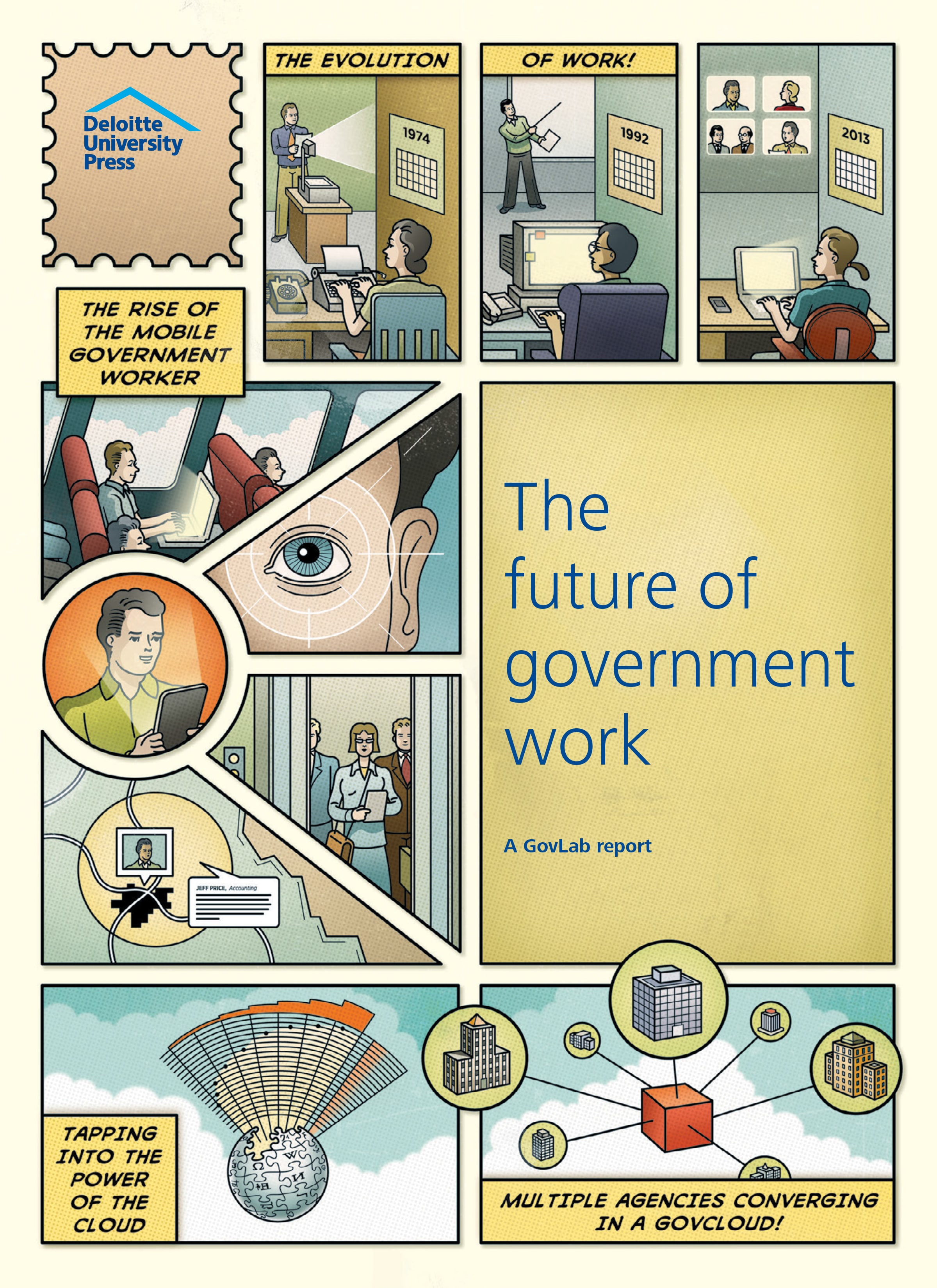The future of government work overview has been saved

The future of government work overview
21 August 2013
- Deloitte University Press
New technologies are changing the way work gets done and opening up new opportunities for boosting employee productivity and effectiveness. How can government agencies take advantage of these changes?
 Introduction: Look forward, agencies
Introduction: Look forward, agencies
By Tiffany Fishman
New technologies are already calling into question some long-established ways of operating in both the public and private sector. For the public sector, getting work done will increasingly mean using these technologies to fundamentally rethink how, where, and when work gets done, and by whom.
GovCloud: The future of government work
By Charlie Tierney, Steve Cottle, and Katie Jorgensen
Major organizations and small startups alike increase their flexibility by sharing storage space, information, and resources in a “cloud.” Why not move beyond computing and apply the cloud model to the workforce? Rather than existing in any single agency, GovCloud workers could reside in the cloud, making them truly government-wide employees, which, in turn, could help agencies become more agile, smaller, and flexible.
Infographic: The GovCloud project lifecycle
Explore the GovCloud approach to government work.
GovCloud and Generation Y (video)
Hear what the class of 1997 thinks about government work and GovCloud.
The mobile government worker: Excerpt from “Gov on the go”
By William D. Eggers and Joshua Jaffe
To illustrate the benefits of mobile technology for government employees, we examine three different types of workers who spend much of their time in the field: human services caseworkers, emergency responders, and law enforcement officers.
Infographic: Telework savings in government
A look at the numbers highlights the potential savings of teleworking for government employees.
AUGMENTED GOVERNMENT (VIDEO)
Augmented reality (AR)—the use of technology to overlay information on a view of a real-world environment—is already used in manufacturing and by the military. Now, with advances in mobile technology and an increasing volume of digital data at our fingertips, AR is positioned to serve as a valuable asset in civilian government as well.
